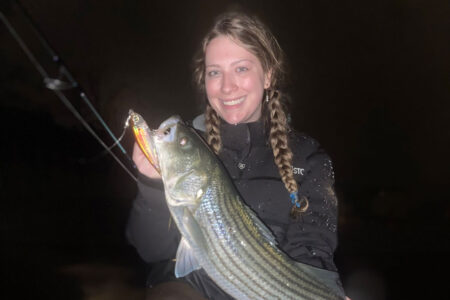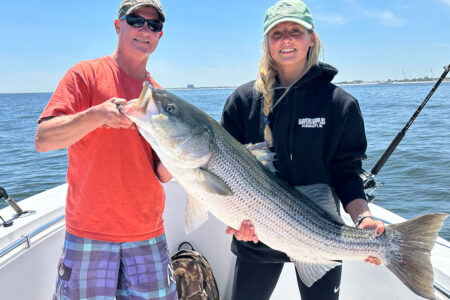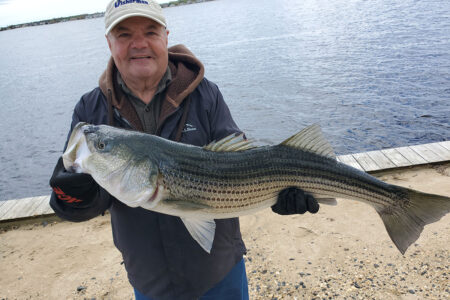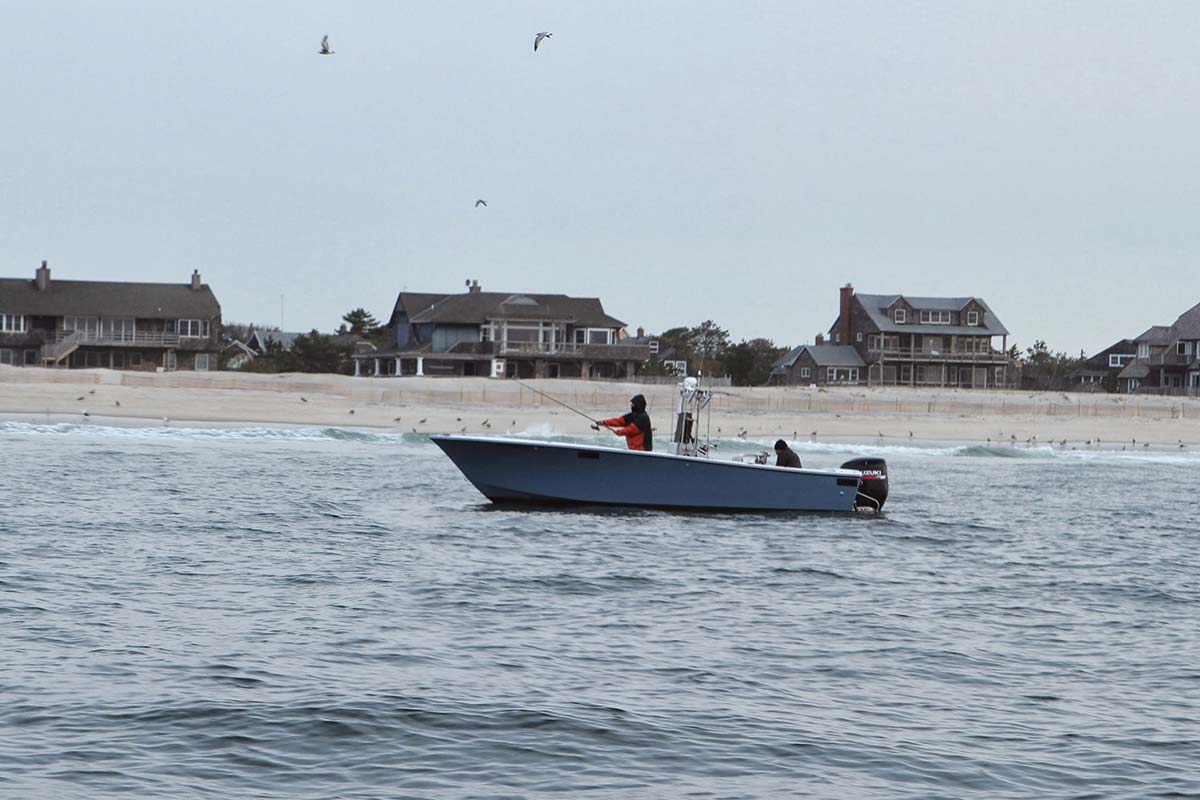
Casting for bass from the deck of your boat adds another dimension to your fishing that may not only be more fun, but often more productive.
One of the great virtues of striped bass as a gamefish is that they respond to so many different types of baits and techniques. They can be caught trolling, they will take virtually any live bait, wallop every type of artificial, and suck down soft baits like clams, worms and chunks, but when it comes to catching stripers from a boat, there is no better way than casting surface lures. While it may not be the most productive approach to the striper game at times, having a big striper explode on a topwater plug is tough to beat.
Whether you cast for stripers into boulder studded shores of places like Cuttyhunk, Plum or Block islands, Montauk’s south side, the rockpiles that line the Jersey Shore, or along back bay marshes, stripers will respond to a variety of topwater plugs. There are other artificials that will out-produce surface lures under a wider range of conditions, and when it comes to catching fish on a consistent basis, it would behoove you to master those other techniques, especially bucktailing and snap jigging. For those who take the time to learn how to work the various topwater offerings, the rewards are worth the effort.
Standard popping plugs, pencil poppers, spook type plugs and metal lip swimmers make up the bulk of the topwater options. Traditionally, most surface plugs are considered daytime tools, but there are times when these lures can be extremely effective after dark. The only negative to working them at night is you lose the benefit of witnessing what is often a dramatic surface strike.
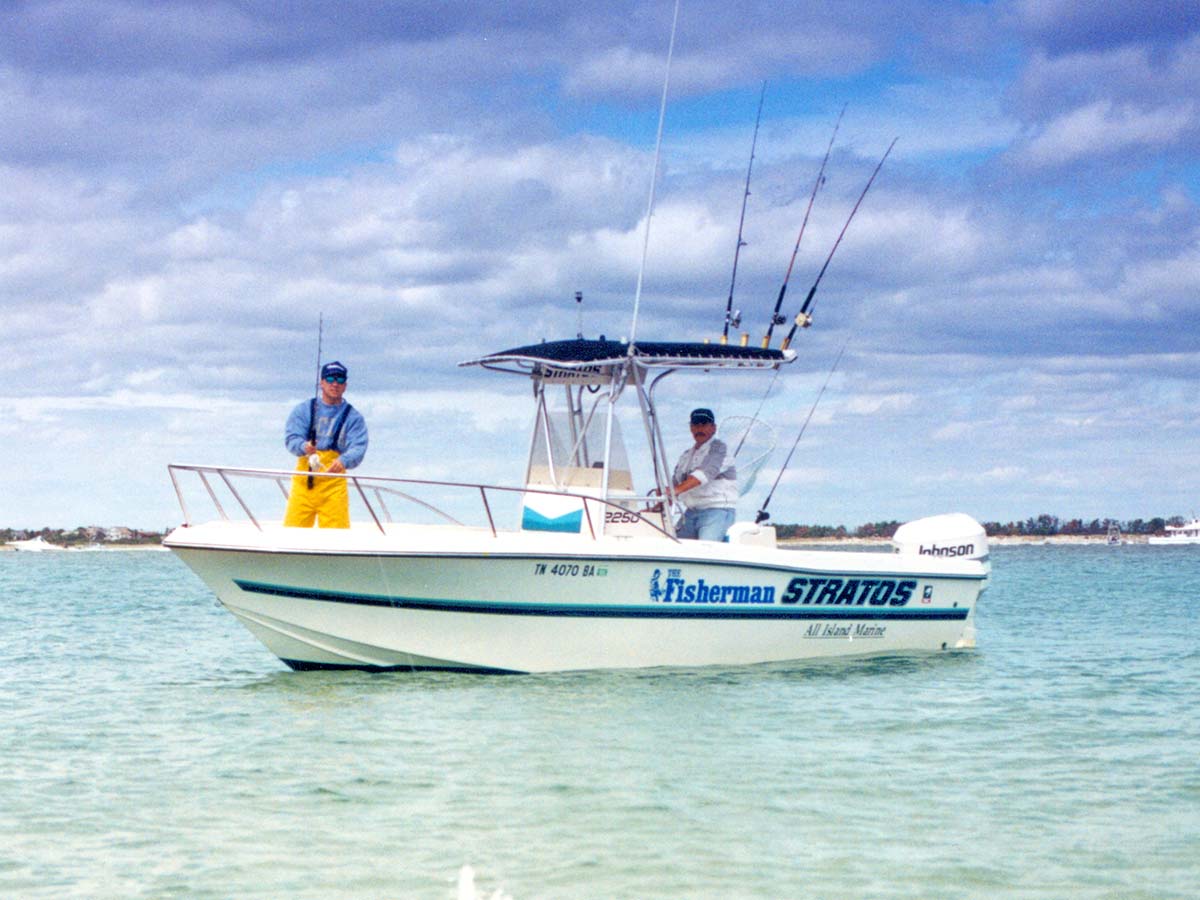
Standard Poppers
For the sake of categorizing, we’re talking about those plugs with a concave head. Body shapes can vary greatly, but all can be worked in a similar fashion. For the most part, stripers are lazy and do not like to expend a lot of energy chasing down a meal. This is especially true of big bass. Among the many poppers on the market are those made by
Gibbs, Super Strike, Yo-Zuri, Tsunami, Atom, Ocean Born, Shimano and Daiwa. The trick to working a popper slowly on the surface lies in getting to know your plugs and developing a rhythm. Plugs that float are obviously much easier to work on the surface, while some sinking plugs require considerable effort to keep them on top. Get familiar with the plugs in your arsenal during down time when there are no fish around, or take them down to a local dock and experiment with your retrieve there.
You should not have to jerk hard to make a plug “pop.” Moving your wrist and forearm a half foot or so is all it should take under most calm water conditions. I prefer parabolic action rods with some stiffness in the tip. As a result, it requires little effort to make a plug move, compared to using a rod with a softer fast tip action. All you are trying to do is get the head of the plug to push enough water to create the fish attracting pop. Popping the plug too hard will cause the entire lure to come out of the water and render it ineffective.
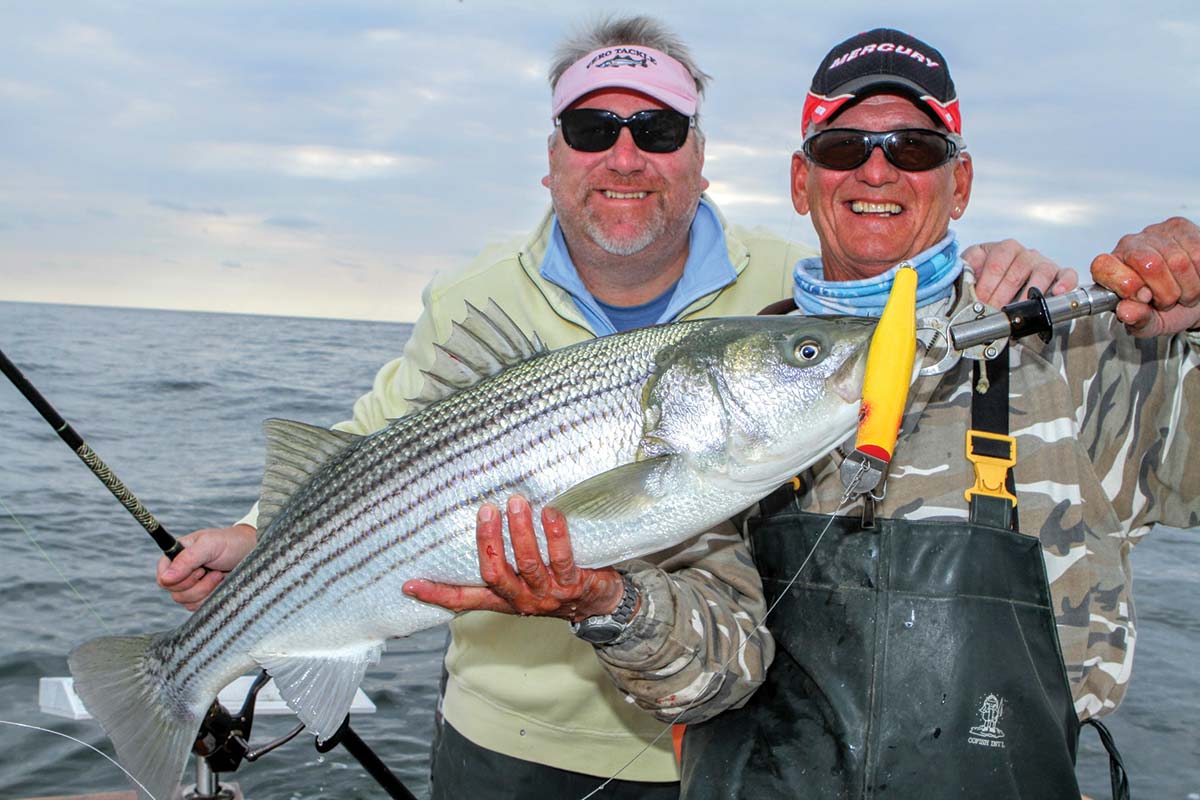
It’s important to always maintain contact with your lure, and have the rod in position to set the hook when a fish comes calling. Keeping the rod between 2:00 and 1:00 should give you enough room to work the lure and still be in position to set the hook. When you do raise a fish, resist the urge to set the hook at the sight of the fish hitting the plug. Give a slight pause and hold off striking until you feel resistance or the weight of the fish. This holds true when fishing with any surface plug.
Some of these plugs can be put to very good use after the sun goes down so don’t be fooled by their reputation as a daytime only tool. The hot plug on some nights in the Montauk surf has been the 2-3/8 ounce Super Strike Little Neck Popper. When retrieved at a very slow pace, you can feel the plug “swimming” much like a metal lip, but with much greater castability. When you need to make long casts into a rocky or wave tossed shoreline from a safe distance, poppers will give you the needed range to keep your boat in the safe zone but still rich prime striper water. When using these plugs after dark, the preferred approach is to remove both sets of 2/0 trebles and replace the belly hook with a 3/0 or 4/0 VMC treble.
Another option that poppers provide is that they can be very effective at doubling as surface swimmers in daylight conditions. When retrieved very slowly along the surface, they will “swim” much like a surface swimming metal lip. A lot of stripers have fallen to poppers fished in this manner, and many standard type poppers can be induced to swim, once you figure out the right rate of retrieve.
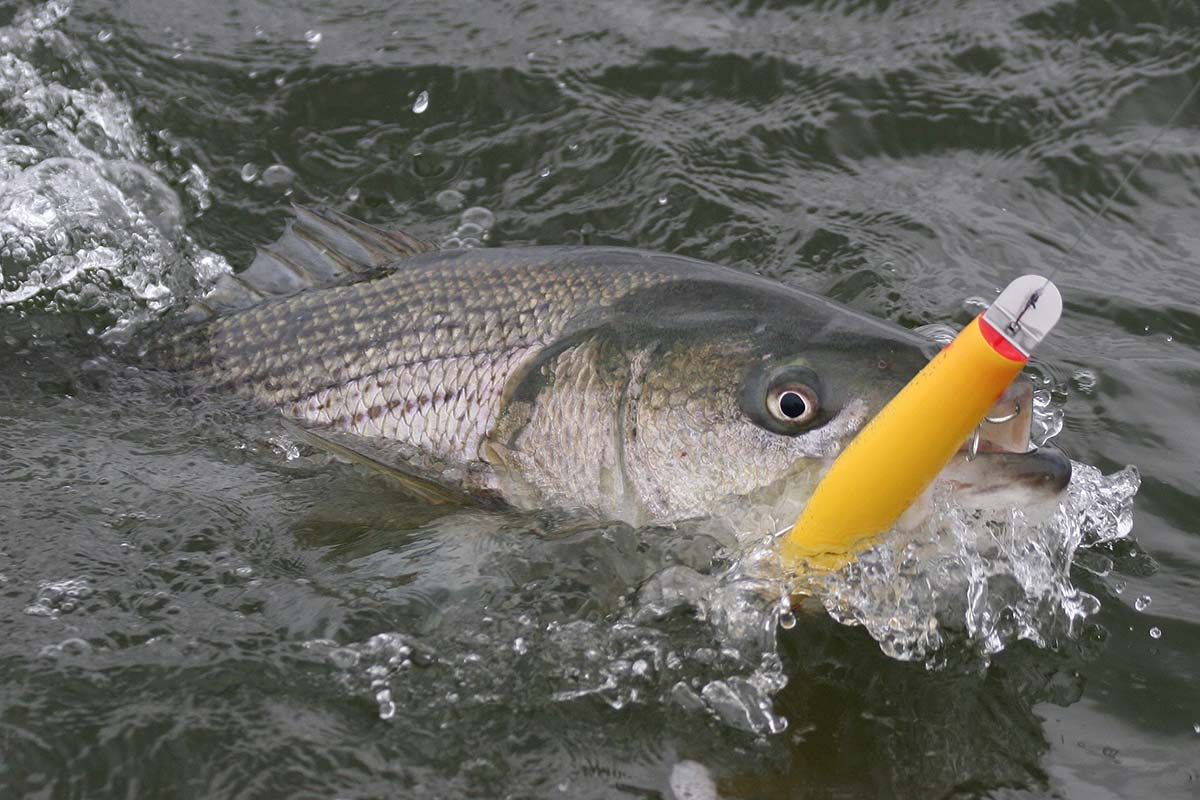
Pencil Poppers
There is no more explosive strike than when a big striper is annoyed enough at the commotion created by these plugs to want to eliminate it from existence. And while the strike itself is enough to fold a weak heart, there are those surface antics once they feel the steel, sometimes cartwheeling, sometimes headshaking with gills flared – much like a tarpon, always thrashing wildly on the surface for those first few seconds of the battle. All of this along with them being so damn effective on bass, especially when the fish are reluctant to strike other offerings. .
While they are wildly popular in the surf, many boat anglers do not arm themselves with these deadly tools. It does take some extra effort to work these plugs properly, but today’s graphite blanks and braided lines make it much easier to work these than in the past. With no give or stretch in the line, and rods weighing a fraction of what they did a decade ago, it takes considerably less effort to make a pencil popper dance effectively.
Another virtue of these plugs is their castability. When they are balanced properly, they are among the best plugs for long distance delivery. Here again, throwing a pencil popper can allow you to keep a safe distance from rocky outcroppings and the white water of inlet bars and still be able to put your plug in the strike zone.
These days, there are many brands of pencil poppers to choose from. I’d suggest trying one or two at a time and see which model allows you to make the longest casts, yet provide you with the right action. Your rod and your method of working the plug might be more compatible with certain models.
For the lure to be working effectively, you want the head of the plug to slap up and down, and side to side during the retrieve. That is accomplished by sliding your right hand a comfortable arms length up the blank (provided you are right-handed). Wrap your hand around the rod and hold the line between your thumb and first finger to create tension during the retrieve. If you don’t do this, your line will spool in loose coils and you are destined for wind loop city. As you slowly retrieve the plug, pump or push the rod with your right hand. If the plug stops working properly, take a couple of quick turns on the reel to pick up the slack. With a little practice, you will be able to pause your retrieve and let the plug do its crazy dance without moving forward – a tactic that drives bass nuts.
The plug’s ability to raise fish when other topwaters fail is well documented, and reason enough to include them in your arsenal.
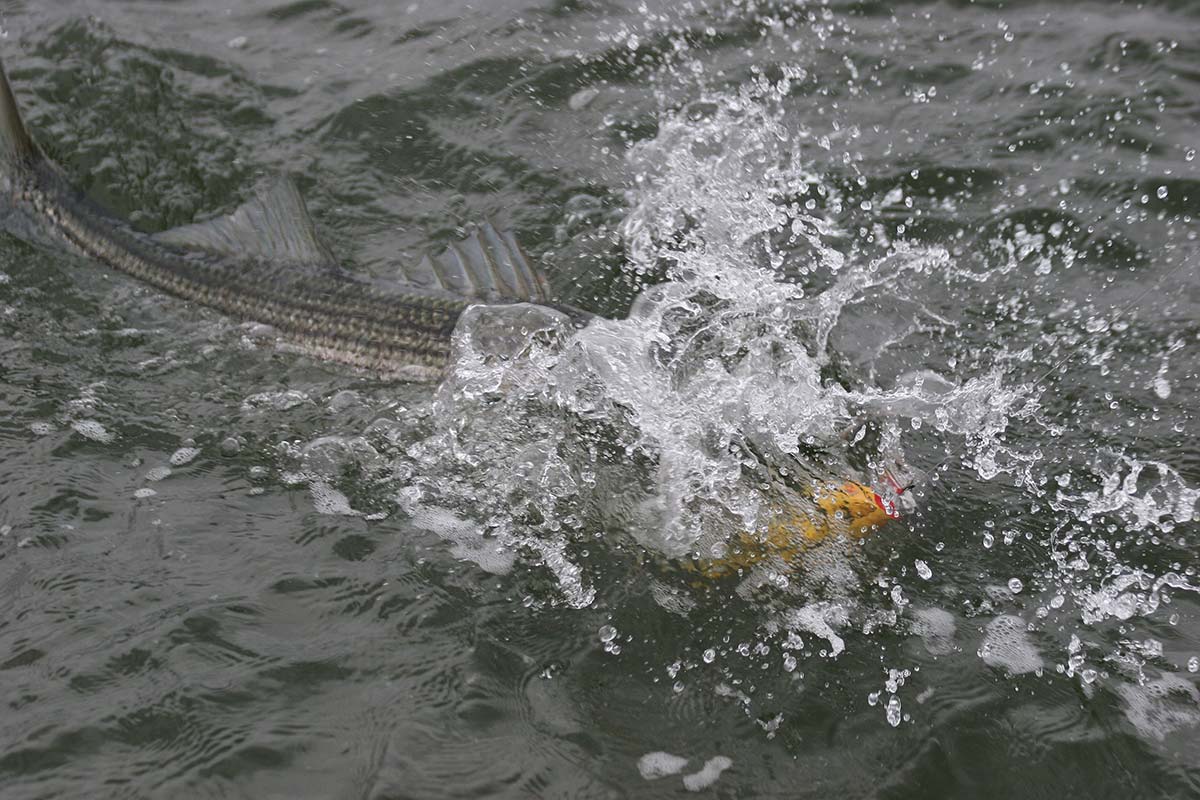
Metal Lips
I have a special fondness for these plugs, and in larger sizes they have a knack for producing quality stripers. Although they can be made to fish on or below the surface, and some models are designed to run well below the surface, my first choice is to swim them on the surface. When worked properly, that seductive, tantalizing side to side wiggle can drive stripers crazy, as evidenced by the explosive strikes that often occur when a fish decides it’s had enough and tries to eat your wood or plastic imposter.
Long standing favorites like the Gibb’s Danny, the Jr. Atom and the Atom 40 are readily available, along with numerous custom made designs. Some, like those made by Beachmaster are available in limited numbers and sell out as soon as they hit tackle shop shelves. Classics like original Dannys, especially those made by Dan Pinchney and Super Strike’s Don Musso (the original designer of the Danny Plug) can sometimes be found at garage sales or flea markets. Keep in mind though that you’ll be competing with plug collectors for some of those models.
While smaller versions of these plugs are available and can be very effective at times, especially on school size fish, it’s the six to eight inch models that tend to draw the largest fish. They also have the ability to draw fish up from 20 feet of water of more thanks to their larger profile and the surface disturbance caused by their swimming action.
When it comes to matching the hatch, these plugs make obvious sense when fish are feeding on bunker, herring, shad, mackerel, small bluefish and a host of other large baitfish. But don’t overlook going to the other extreme. I’ve had success a number of times by turning to one of these large plugs when bass were being especially finicky as they fed on tiny white bait or baby sand eels. Most times it resulted in just hooking two or three fish, but they were often the only fish taken on an otherwise fishless outing.
Adjusting the plug to swim on the surface is accomplished by using a pair of pliers to bend the eye of the plug in the opposite direction you want it to swim. Bend it down to make it swim higher on the surface, and up to make it swim below the surface. Try to avoid messing with the plug’s lip unless the lure is not swimming properly to begin with, in which case you have nothing to lose.
I prefer a plug with a nice side to side kick that leaves a very noticeable wake.
To allow for better side to side movement at a slower rate of retrieve, I often remove the tail hook from these plugs. You will miss few, if any, strikes from bass since they will almost always take these lures head first. When small anchovies are in evidence, adding a small tuft of hookless bucktail to the tail will often result in more strikes.
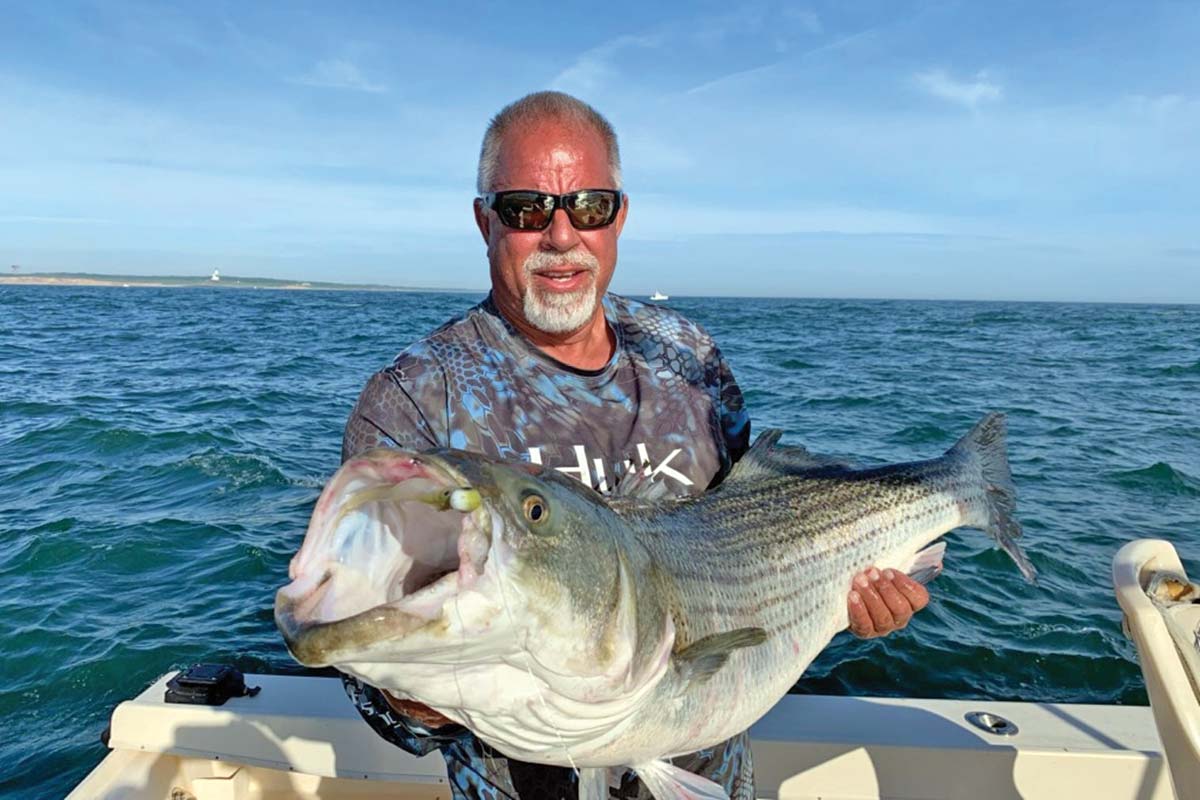
When fished on the surface, you must maintain constant contact with the plug and adjust your retrieve accordingly in order to get just the right swimming action throughout the retrieve. You will need to make adjustments as the lure swings in the current and also as your lure is slowed or speeded up by wave movement. The more you fish them, the quicker you will develop a better feel for the plug’s proper action.
Casting these plugs, especially the larger models, requires more of a lob type cast. They are just too wind resistant to fire off like other lures. I like to finger my line as the plug is descending, allowing it to slap the surface as it lands. That slapping sound seems to draw the attention of cruising stripers, especially in clam water, and will sometimes illicit a strike as soon as the plug hits the water. Letting the lure crash down on the surface probably has the opposite effect of spooking any nearby fish in shallow water. The drawing ability of these plugs is enhanced by a calm surface, although a slight chop that doesn’t impact on the plug’s action can help mask the imposter.
Another ideal situation is when you can work the backside of waves when working the white water of inlet bars. Only experienced boat handlers should attempt fishing the white water of inlets and outer bars. While these areas can be very productive for stripers and blues, a mistake or error in judgement could result in tragedy. More than a few boats have been flipped when trying to work around these breaking waves.
The ultimate reward in fishing any of these surface plugs is when a 30 or better striper rises from the depths to crash your offering, setting off a shower of spray and some wild surface antics. Have this happen once, and you will be hooked.
Given all of the school size stripers populating the waters of the Northeast these days, be sure to stock smaller versions of these plugs in your arsenal. And as I noted in the beginning, topwaters may not always be the most productive way to go. I would never leave the dock without a selection of bucktails and soft plastics. Former New England Fisherman editor, the late Tim Coleman, swore by nine and 10-inch plastic worms/eels on a leadhead when working the Rhode Island and Connecticut coasts, and he caught plenty of fish, from schoolies to cows. These days, some striper sharpies are doing the same around Block Island’s boulder strewn shores with great success.
On Long Island’s South Shore, boatmen working around bay bridges have been doing a job on schoolies for years on soft plastics like Bass Assassins. Bucktails will almost always score stripers of any size so it would behoove you to carry a good selection of hairy and feathered leadheads.
Casting for bass from the deck of your boat adds another dimension to your fishing that may not only be more fun, but often more productive. Next time you leave the dock, be sure there are some casting rods taking up space in your rocket launcher, and a good selection of artificials in your tackle locker.

